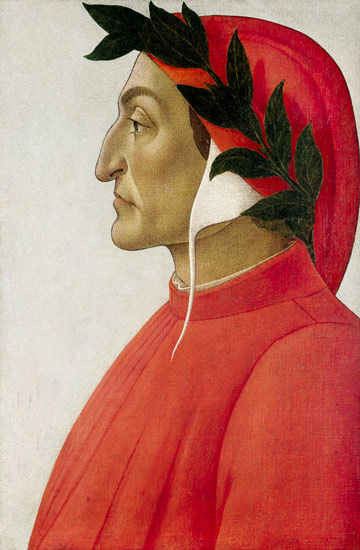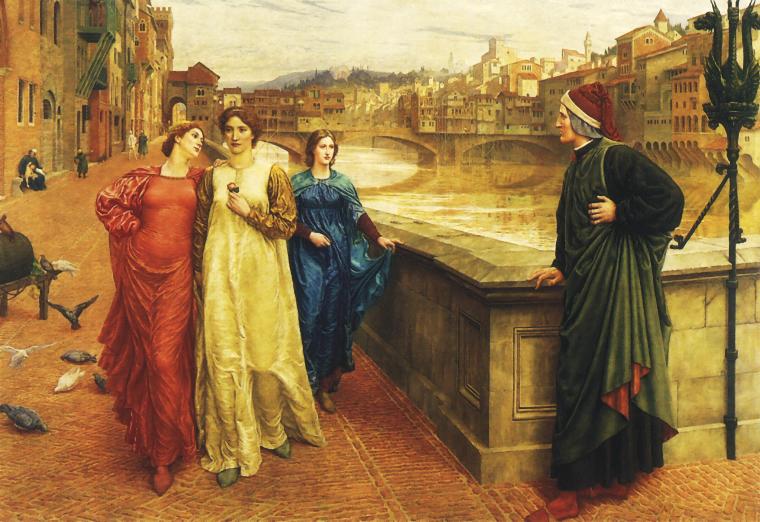Dante Alighieri (b. Florence 22 May-13 June 1265, d. Ravenna 14 September 1321) was first banished from Florence on this day, 27 January in 1302. He was again condemned to exile in March of the same year. It was this banishment, into political exile in Ravenna, that was the catalyst for The Divine Comedy, and thus, the catalyst for a tremendous number of visual works, which include portraits of the author, as well as fresco cycles depicting Hell, Purgatory (Dante’s invention), and Heaven. Images of Dante’s muse Beatrice Portinari, whom he lauded in the Vita Nova (1295) are also also common. Dante remains entombed in Ravenna, while a tomb constructed for him in Santa Croce, stands empty.
Sandro Botticelli, Portrait of Dante Alighieri, oil on canvas, 1496, private collection, Geneva.
Andrea del Castagno, Dante, detail of The Cycle of Illustrious Men and Women, fresco, 148-1451, Galleria degli Uffizi, Florence.
Domenico de Michelino, Dante and The Three Kingdoms, tempera on panel, 1465, Santa Maria del Fiore, Florence.
Sandro Botticelli, Map of the Inferno, 1480-1490, Biblioteca Apostolica Vatican, Rome
Henry Holiday, Dante and Beatrice, oil on canvas, 1883, Walker Art Gallery, Liverpool.
Eugene Delacroix, The Barque of Dante (Dante and Virgil in Hell), oil on canvas, 1822, Louvre, Paris.
Dante Gabriel Rossetti, Beata Beatrix, oil on canvas 1864-1870, Tate Gallery, London.
Stefano Ricci, 1819-1830, Cenotaph of Dante Alighieri, Santa Croce, Florence.
Camillo Morigia, Tomb of Dante Alighieri, 1870, Ravenna.









